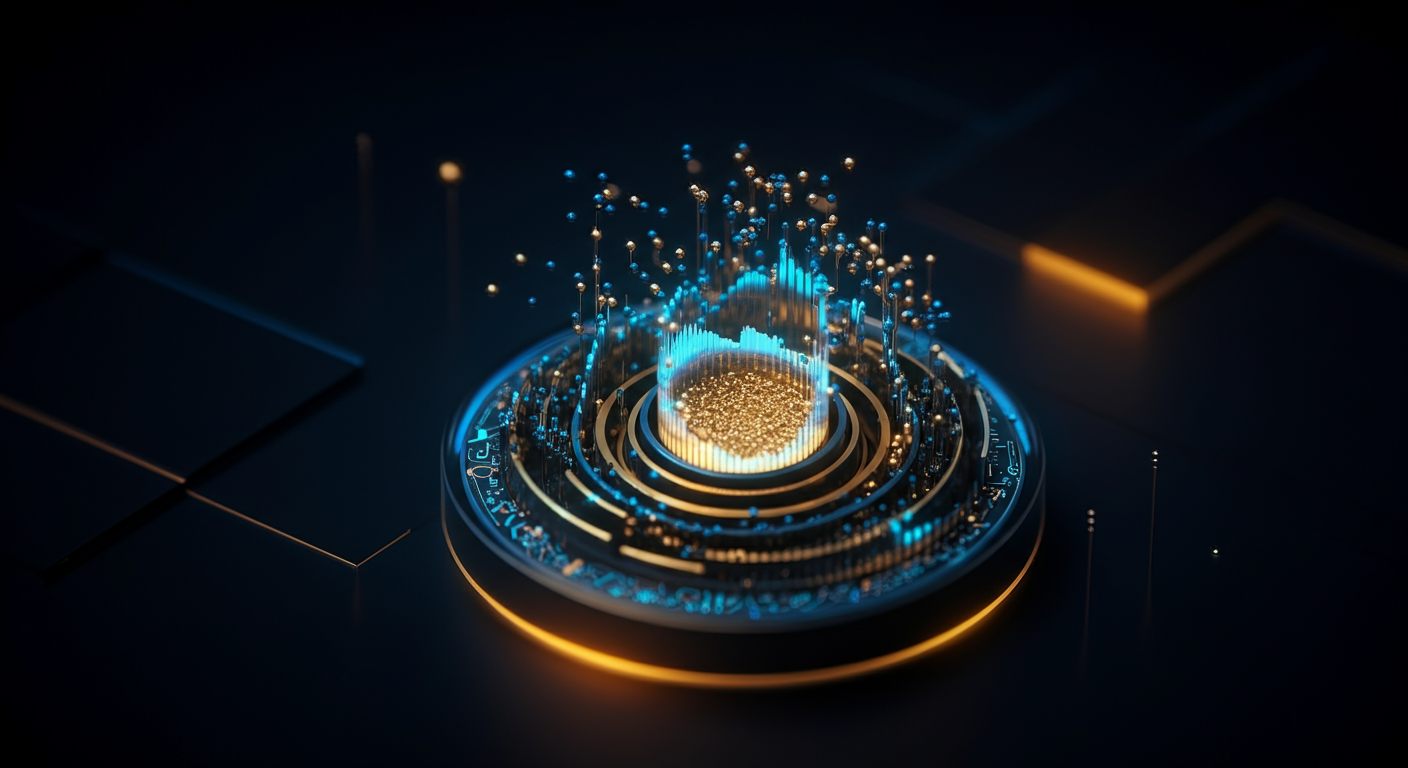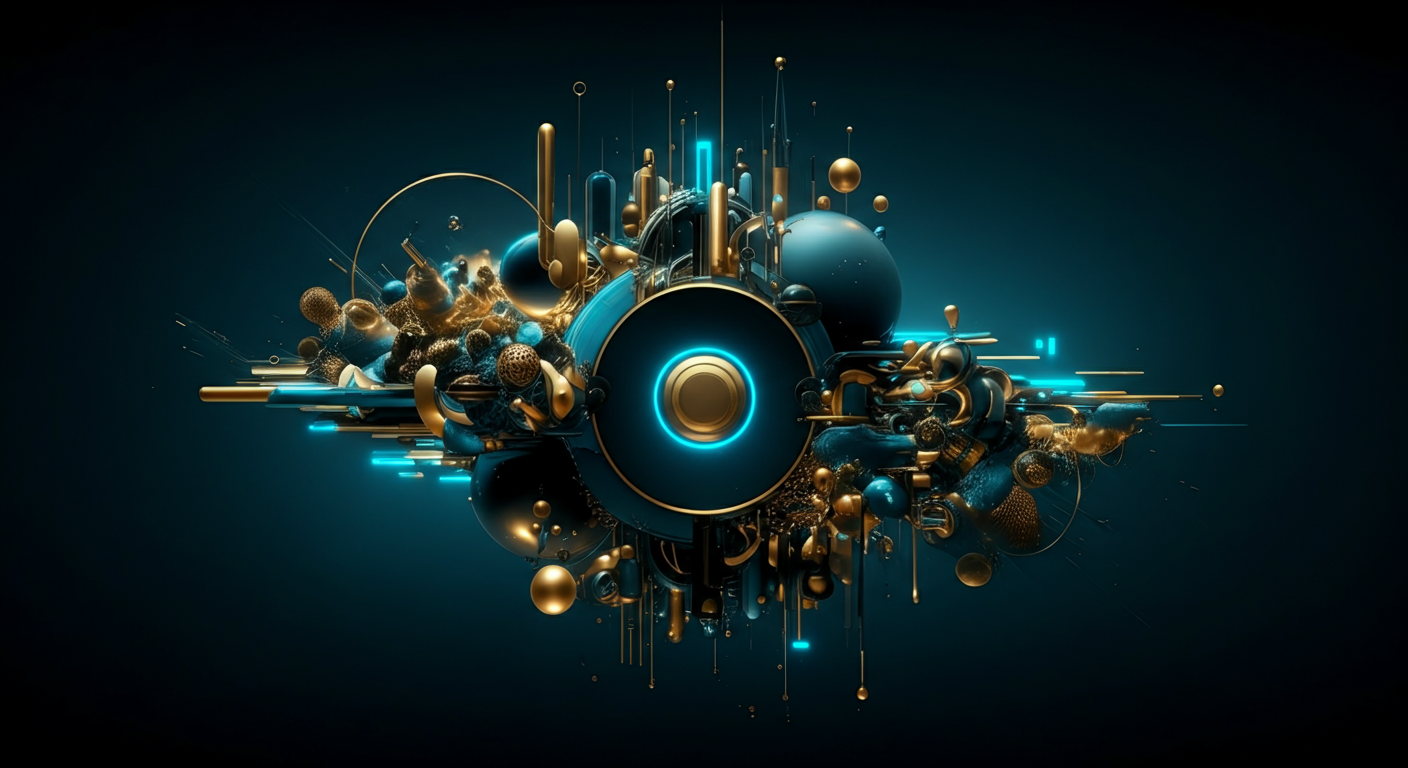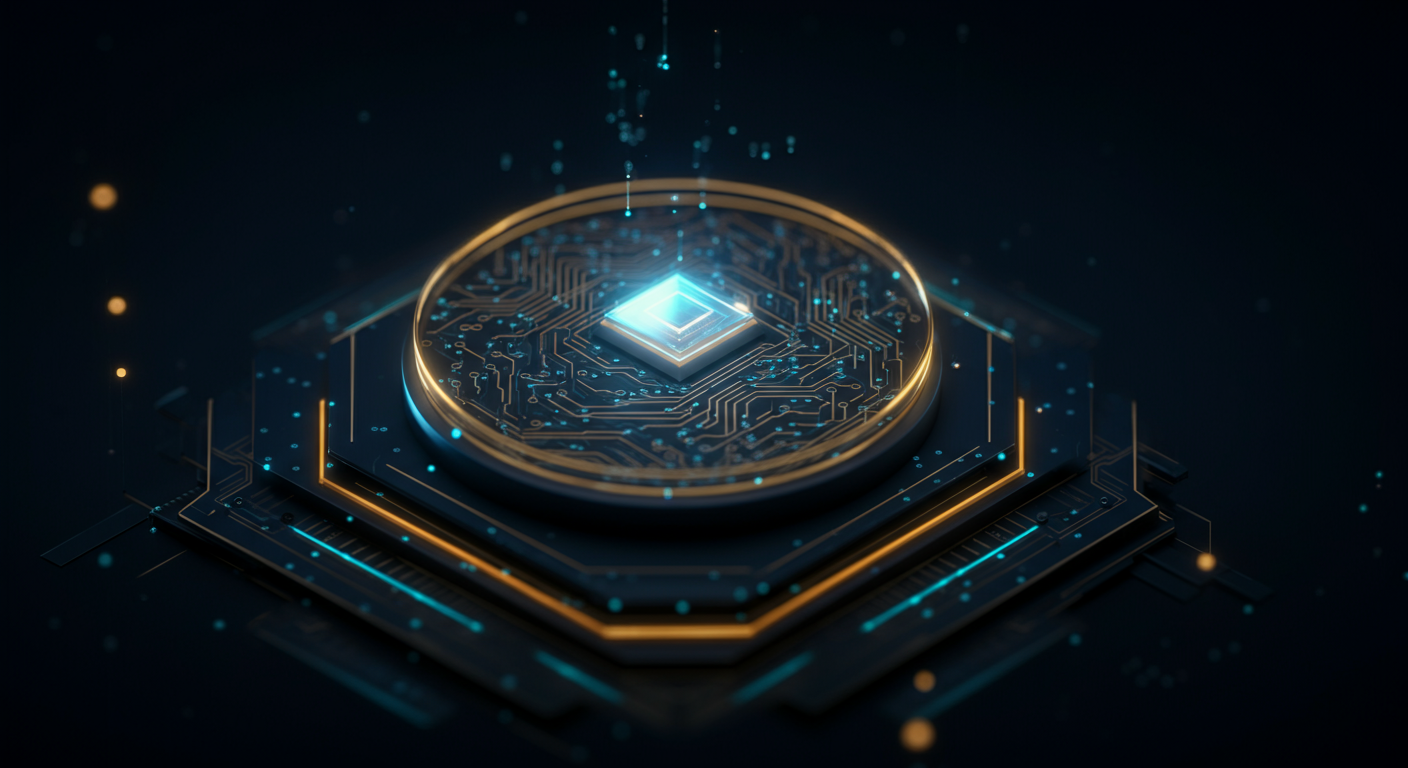Google's Nano: A Deep Dive into Image Generation's Future

Introduction: Nano's Arrival and the Shifting Landscape of AI Art
Google's Nano is poised to be a game-changer, potentially democratizing the creation of photorealistic images and impacting numerous industries.
Nano: A New Frontier in Image Generation
"With Nano, Google pushes the boundaries of AI, inviting everyone to participate in the future of creative expression."
- What is Nano? It is a cutting-edge image generation model from Google, focusing on efficiency and accessibility without sacrificing quality.
- Significance: The arrival of Nano signals a further shift in AI-driven creativity, putting powerful tools directly into the hands of users.
- Impact: Expect to see Nano influence AI art, design workflows, and content creation, similar to how ChatGPT reshaped text generation.
Implications for Creators
- Artists: Nano provides new avenues for artistic exploration, allowing for rapid prototyping and realization of complex ideas.
- Designers: This tool offers an accelerated workflow to quickly generate visuals, explore variations, and iterate on design concepts. Consider how Design AI Tools like this can empower creators.
- Content Creators: Nano can streamline the creation of engaging visual content for social media, advertising, and more, empowering marketers.
The Future of AI-Driven Creativity

As AI models like Nano continue to evolve, the line between human creativity and artificial intelligence will further blur, prompting deeper discussions about authorship, ethics, and the nature of art itself. Stay tuned as we continue to track the future of image generation technology.
In summary, Google's Nano heralds a new era of accessible, high-quality AI image generation, and its impact will be felt across the creative landscape, raising intriguing questions about the future of art and design. This development makes finding the Best AI Tool Directory all the more critical for navigating this rapidly evolving field.
Google's Nano model could redefine image generation through its innovative architecture and efficient design.
Nano's Architecture: Unveiling the Technical Innovations

The Nano model’s architecture showcases a significant leap in image generation technology. It's designed for efficiency without sacrificing quality, marking a departure from computationally intensive predecessors.
- Comparison with Previous Google Models: Unlike Imagen and Parti, which demanded substantial processing power, Nano prioritizes efficiency. Imagen, for instance, relies on a large language model to generate images from text prompts, followed by a series of diffusion models to increase resolution. Parti, another Google creation, uses a transformer-based architecture to generate images as a sequence of discrete tokens. Nano aims to achieve comparable results with a more streamlined process.
- Novel Techniques for Improved Image Quality: Specific technical details are limited, but it's implied that Nano uses novel techniques to optimize image generation. These likely involve advancements in algorithms that allow for high-quality output with reduced computational load.
- Computational Requirements and Accessibility: While precise technical specifications aren't available, the emphasis on efficiency suggests Nano is designed to be more accessible, potentially running on devices with less processing power. This contrasts with larger models, which often require specialized hardware.
Nano's architecture focuses on bringing advanced image generation capabilities to a wider range of devices and users, hinting at a future where AI image creation is more integrated into everyday applications.
This efficient design could enable new applications in mobile devices and edge computing scenarios.
One of the most captivating aspects of Google's Nano is its accessibility, allowing users to dive right into the world of AI-powered image generation. Here's how to get started.
Accessing Nano
At present, access to Google's Nano is integrated into specific Google products and services. As it matures, wider access through a dedicated web interface or API is anticipated. Keep an eye on official Google announcements for expanded availability. For now, accessing Nano means leveraging platforms where it's already integrated:
- Google Cloud: For developers, certain Google Cloud AI platforms might offer access to Nano for experimentation.
- Pixel Devices: Some Pixel phone features leverage Nano.
Input Methods: Unleash Your Creativity
Nano supports a variety of input methods to guide the image generation process:
- Text Prompts: Describe your desired image with detail. The more specific, the better.
- Image Prompts: Use an existing image as a starting point. Nano will interpret the image's style, composition, and content to generate a new image.
- Combined Prompts: Blending text and image prompts allows you to refine results further, guiding Nano with both visual and textual cues.
- How to use Google Nano? Understanding the combination of inputs is the first step. Experiment to see what works!
Tips and Tricks for Stellar Results
- Detailed Descriptions: Be descriptive with text prompts, including details about color, composition, and style. This is AI art prompt engineering at its finest.
- Iterative Refinement: Generate multiple images and refine your prompts based on the results.
- Embrace Experimentation: Try unusual combinations of prompts to discover unexpected and unique outputs.
- Nano image customization will depend on the settings allowed on each platform.
User Interface and Customization
The user interface will vary depending on the platform through which you're accessing Nano. However, expect common elements such as:
- Prompt Input Field: A text box for entering your descriptions.
- Image Upload Area: A section to upload images as prompts.
- Customization Options: Sliders or toggles to adjust style, detail, and other parameters. The range of settings lets you control generating images with Nano.
Evaluating the future of image generation requires a close look at Google's Nano and its image quality.
Nano's Image Quality
How does Google's Nano stack up? Currently, information is scarce, but key aspects to consider are:
- Realism: Does Nano produce images that closely resemble real-world scenes or subjects?
- Detail: How well does Nano capture fine details in generated images, like textures or intricate patterns?
- Coherence: Are the images logically consistent, without bizarre artifacts or anatomical errors?
- Aesthetic Appeal: Does Nano create visually pleasing and engaging images?
Benchmarking Against Existing Models
A true evaluation involves comparing Nano against industry leaders such as DALL-E, Midjourney, and Stable Diffusion:
- FID (Fréchet Inception Distance): Lower FID scores generally indicate better image quality and a closer distribution to real-world images.
- CLIP Score: This metric measures how well the generated image aligns with the text prompt, reflecting semantic accuracy.
- Landscapes
- Portraits
- Abstract Art
Strengths and Weaknesses
Like all models, Nano likely possesses unique strengths and weaknesses:
- Strengths: Potential areas for Nano to excel include specific artistic styles, efficient resource utilization, or novel approaches to prompt interpretation.
- Weaknesses: Common challenges in image generation are photorealistic rendering, handling complex prompts, and avoiding biases. Identifying these for Nano is essential.
AI image generators like Google's Nano hold immense promise, but we must consider the ethical tightrope we're walking.
Addressing Inherent Biases
AI models learn from the data they're fed, and if that data reflects existing societal biases, the AI will amplify them. For example:- If training datasets primarily showcase images of CEOs as men, Nano might struggle to generate unbiased representations of female leaders. We need active AI bias detection and mitigation strategies.
- Lack of diverse datasets can lead to misrepresentation of underrepresented groups.
The Peril of Deepfakes and Misinformation
"Imagination is more important than knowledge. Knowledge is limited. Imagination encircles the world." - Yours Truly (circa 1925, paraphrased with AI assistance)
The ability to create photorealistic images from text opens a Pandora's Box of potential misuse. Consider these risks:
- Deepfakes: Generating fake images of public figures saying or doing things they never did can severely damage reputations and incite social unrest.
- Misinformation: The ease with which convincing fake images can be created can fuel false narratives and propaganda. It's paramount to prioritize deepfake prevention and detection technologies.
Google's Efforts Towards Responsible AI
Google has a significant responsibility to ensure Nano is used ethically. Their efforts reportedly include:- Implementing safeguards to prevent the generation of harmful or misleading content.
- Developing techniques for detecting and mitigating biases in the model.
- Promoting responsible AI development and use through research and education.
Nano's seamless integration into the Google ecosystem amplifies its capabilities, creating a powerful synergy for image generation and beyond.
Streamlined Integration with Google's Suite
Google Nano doesn't exist in isolation; it's designed to work hand-in-hand with other Google services.- Google Cloud: Leverage Google's robust cloud infrastructure for scalable processing and storage of generated images. For instance, using Google Cloud ensures Nano can handle large volumes of requests.
- Google AI Platform: Integrates with Google's AI tools, allowing developers to easily incorporate image generation into existing AI workflows, making it simple to use a Category: Design AI Tools.
- Synergy:
Diverse Industry Applications
The potential use cases for Nano are vast, impacting various sectors:- Marketing: Automate the creation of visually appealing ads and marketing materials.
- Education: Enhance learning resources with custom-generated images for educational content. Imagine interactive textbooks brought to life.
- Entertainment: Quickly generate concept art and storyboards for film, games, and animation.
- Other Industries: E-commerce, real estate, and healthcare can also benefit from AI-generated visuals for various applications.
Advantages Within the Google Ecosystem
Choosing Nano within the Google ecosystem offers several advantages:- Enhanced Security: Benefit from Google's robust security infrastructure for safeguarding your data.
- Simplified Management: Streamline your workflows with a unified platform for AI development and deployment.
- Innovation: Stay ahead of the curve with continuous updates and improvements to Nano's capabilities. Consider also reviewing a Guide to Finding the Best AI Tool Directory to find complementary tools.
The Future of Nano: Roadmap and Potential Developments
Google's Nano is poised to reshape AI image generation, and speculating on its future roadmap reveals exciting possibilities. Nano enables efficient AI processing on edge devices.
Potential Improvements
The trajectory of Nano suggests improvements across several key areas:- Enhanced Image Quality: Expect higher resolution outputs with more realistic details. Analogous to smartphone cameras, computational photography could be integrated for superior image quality.
- Increased Speed: Real-time or near-real-time image generation would unlock new interactive applications. Imagine generating variations of images during a video call.
- Expanded Feature Set: Advanced editing capabilities, style transfer options, and personalized content creation tools could become standard.
Multimodal Integration
The fusion of Nano with other AI modalities could unlock powerful creative workflows.- Imagine text-to-image combined with audio-guided style transfer.
- Or video generation capabilities allowing creation of short, animated clips from textual prompts.
Impact on the Creative Landscape
Nano has the potential to democratize creativity:- Empowering amateur artists and hobbyists with accessible tools.
- Augmenting professional workflows with AI-assisted ideation and prototyping.
- Driving innovation in fields like design, marketing, and entertainment.
Google's Nano marks a turning point in image generation, placing creative power directly in the hands of users.
Nano's Core Strengths: A Summary
- Accessibility: Nano has the potential to democratize creativity for everyone.
- Speed & Efficiency: Optimized for fast performance, allowing quicker experimentation.
- User Empowerment: Puts control of image creation directly in the user's hands.
- Democratization: Anyone with a device will soon be able to generate images. This could revolutionize fields from education to marketing.
- Innovation Driver: Expect Nano to trigger further development in AI-driven tools.
Democratizing Creativity
Nano promises a future where artistic expression is no longer limited by skill or resources. Image generation will be as simple as typing a few words. For example, consider a student creating visual aids for a project or a small business owner generating marketing materials.A Transformative Impact on Art
AI is rapidly changing the art world. While some fear job displacement, many see AI as a tool for enhancement, allowing artists to explore new creative avenues. This shift could lead to entirely new art forms and redefine the boundaries of human-machine collaboration. Nano may even create demand for new types of artists – prompt engineers!In conclusion, Google's Nano is poised to be more than just another image generator; it's a catalyst for creative innovation. The impact on the art world and the democratization of creative tools will be transformative. As AI continues to evolve, expect further breakthroughs that blur the line between human and machine creativity, pushing the boundaries of what's possible.
Keywords
Google Nano, AI image generation, image generator, AI art, deep learning, neural networks, artificial intelligence, image synthesis, text-to-image, AI model, image quality, AI ethics, Google AI, generative AI
Hashtags
#AIArt #ImageGeneration #GoogleAI #GenerativeAI #DeepLearning
Recommended AI tools

Your AI assistant for conversation, research, and productivity—now with apps and advanced voice features.

Bring your ideas to life: create realistic videos from text, images, or video with AI-powered Sora.

Your everyday Google AI assistant for creativity, research, and productivity

Accurate answers, powered by AI.

Open-weight, efficient AI models for advanced reasoning and research.

Generate on-brand AI images from text, sketches, or photos—fast, realistic, and ready for commercial use.
About the Author

Written by
Dr. William Bobos
Dr. William Bobos (known as 'Dr. Bob') is a long-time AI expert focused on practical evaluations of AI tools and frameworks. He frequently tests new releases, reads academic papers, and tracks industry news to translate breakthroughs into real-world use. At Best AI Tools, he curates clear, actionable insights for builders, researchers, and decision-makers.
More from Dr.

